Evaluation of Antimicrobial Activity and Cytotoxicity Effects of Extracts of Piper nigrum L. and Piperine
Abstract
1. Introduction
2. Results and Discussion
2.1. Extraction Procedures
2.2. Characterization of Piperine Crystals
2.2.1. Nuclear Magnetic Resonance (NMR)
2.2.2. Optical Microscopy Analysis
2.2.3. Scanning Electron Microscopy (SEM) and Energy Dispersive Spectroscopy (EDS)
2.2.4. X-ray Diffraction (XRD)
2.2.5. Thermogravimetry (TG) and Differential Scanning Calorimetry (DSC)
2.3. Biological Assays
2.3.1. Analysis of Antimicrobial and Antifungal Activity
2.3.2. Cytotoxic Analysis of Piperine and Black Pepper Extracts in Tumor Lineages
3. Materials and Methods
3.1. Plant Material
3.2. Characterization of Piperine Crystals
3.2.1. Optical Microscopic Analysis
3.2.2. Scanning Electron Microscopy (SEM) and Energy Dispersive Spectroscopy (EDS)
3.2.3. X-ray Diffraction (XRD)
3.3. Biological Assays
3.3.1. Antimicrobial
Bacterial and Fungal Strains
Preparation of Media and Standardization of Inoculum
Sample Microdilution Method for Determining the Minimum Inhibitory Concentrations (MIC) and Minimum Bactericidal and Antifungal Concentrations
3.4. Cell Culture
3.5. Cytotoxicity Assay
3.6. Data Analysis
4. Conclusions
Supplementary Materials
Author Contributions
Funding
Institutional Review Board Statement
Informed Consent Statement
Data Availability Statement
Conflicts of Interest
References
- Rehman, A.; Mehmood, M.H.; Haneef, M.; Gilani, A.H.; Ilyas, M.; Siddiqui, B.S.; Ahmed, M. Potential of Black Pepper as a Functional Food for Treatment of Airways Disorders. J. Funct. Foods 2015, 19, 126–140. [Google Scholar] [CrossRef]
- Greenshields, A.L.; Doucette, C.D.; Sutton, K.M.; Madera, L.; Annan, H.; Yaffe, P.B.; Knickle, A.F.; Dong, Z.; Hoskin, D.W. Piperine Inhibits the Growth and Motility of Triple-Negative Breast Cancer Cells. Cancer Lett. 2015, 357, 129–140. [Google Scholar] [CrossRef] [PubMed]
- Do Nascimento, L.D.; de Moraes, A.A.B.; da Costa, K.S.; Galúcio, J.M.P.; Taube, P.S.; Costa, C.M.L.; Cruz, J.N.; Andrade, E.H.A.; de Faria, L.J.G. Bioactive Natural Compounds and Antioxidant Activity of Essential Oils from Spice Plants: New Findings and Potential Applications. Biomolecules 2020, 10, 988. [Google Scholar] [CrossRef] [PubMed]
- Bezerra, F.W.; De Oliveira, M.S.S.; Bezerra, P.N.N.; Cunha, V.M.; Silva, M.P.P.; da Costa, W.A.; Pinto, R.H.; Cordeiro, R.M.M.; Da Cruz, J.N.N.; Chaves Neto, A.M.J.; et al. Extraction of bioactive compounds. In Green Sustainable Process for Chemical and Environmental Engineering and Science; Elsevier: Amsterdam, The Netherlands, 2020; pp. 149–167. ISBN 9780128173886. [Google Scholar]
- Cascaes, M.M.; Dos, O.; Carneiro, S.; Diniz Do Nascimento, L.; Antônio Barbosa De Moraes, Â.; Santana De Oliveira, M.; Neves Cruz, J.; Skelding, G.M.; Guilhon, P.; Helena De Aguiar Andrade, E.; et al. Essential Oils from Annonaceae Species from Brazil: A Systematic Review of Their Phytochemistry, and Biological Activities. Int. J. Mol. Sci. 2021, 22, 12140. [Google Scholar] [CrossRef] [PubMed]
- De Oliveira, M.S.; Silva, S.G.; da Cruz, J.N.; Ortiz, E.; da Costa, W.A.; Wariss, F.; Bezerra, F.; Cunha, V.M.B.; Cordeiro, R.M.; Neto, A.M.d.J.C.; et al. Supercritical CO2 application in essential oil extraction. In Materials Research Foundations; Inamuddin, R.M., Asiri, A.M., Eds.; Materials Research Foundations: Millersville, PA, USA, 2019; Volume 54, pp. 1–28. [Google Scholar]
- Costa, E.; Silva, R.; Espejo-Román, J.; Neto, M.D.A.; Cruz, J.; Leite, F.; Silva, C.; Pinheiro, J.; Macêdo, W.; Santos, C. Chemometric Methods in Antimalarial Drug Design from 1,2,4,5-Tetraoxanes Analogues. SAR QSAR Environ. Res. 2020, 31, 677–695. [Google Scholar] [CrossRef] [PubMed]
- Dosoky, N.S.; Satyal, P.; Barata, L.M.; Da Silva, J.K.R.; Setzer, W.N. Volatiles of Black Pepper Fruits (Piper Nigrum L.). Molecules 2019, 24, 4244. [Google Scholar] [CrossRef] [PubMed]
- Kadosh, Y.; Muthuraman, S.; Yaniv, K.; Baruch, Y.; Gopas, J.; Kushmaro, A.; Kumar, R.S. Quorum Sensing and Nf-Κb Inhibition of Synthetic Coumaperine Derivatives from Piper Nigrum. Molecules 2021, 26, 2293. [Google Scholar] [CrossRef]
- Almeida, V.M.; Dias, Ê.R.; Souza, B.C.; Cruz, J.N.; Santos, C.B.R.; Leite, F.H.A.; Queiroz, R.F.; Branco, A. Methoxylated Flavonols from Vellozia Dasypus Seub Ethyl Acetate Active Myeloperoxidase Extract: In Vitro and in Silico Assays. J. Biomol. Struct. Dyn. 2021, 40, 7574–7583. [Google Scholar] [CrossRef]
- Wansri, R.; Lin, A.C.K.; Pengon, J.; Kamchonwongpaisan, S.; Srimongkolpithak, N.; Rattanajak, R.; Wilasluck, P.; Deetanya, P.; Wangkanont, K.; Hengphasatporn, K.; et al. Semi-Synthesis of N-Aryl Amide Analogs of Piperine from Piper Nigrum and Evaluation of Their Antitrypanosomal, Antimalarial, and Anti-SARS-CoV-2 Main Protease Activities. Molecules 2022, 27, 2841. [Google Scholar] [CrossRef]
- Ee, G.C.L.; Lim, C.M.; Rahmani, M.; Shaari, K.; Bong, C.F.J. Pellitorine, a Potential Anti-Cancer Lead Compound against HL60 and MCT-7 Cell Lines and Microbial Transformation of Piperine from Piper Nigrum. Molecules 2010, 15, 2398–2404. [Google Scholar] [CrossRef]
- Trindade, R.; Almeida, L.; Xavier, L.; Andrade, E.H.; Maia, J.G.; Mello, A.; Setzer, W.N.; Ramos, A.; da Silva, J.K.R. Influence on Secondary Metabolism of Piper Nigrum l. By Co-Inoculation with Arbuscular Mycorrhizal Fungi and Fusarium Solani f. Sp. Piperis. Microorganisms 2021, 9, 484. [Google Scholar] [CrossRef]
- Kattupalli, D.; Sreenivasan, A.; Soniya, E.V. A Genome-Wide Analysis of Pathogenesis-Related Protein-1 (Pr-1) Genes from Piper Nigrum Reveals Its Critical Role during Phytophthora Capsici Infection. Genes 2021, 12, 1007. [Google Scholar] [CrossRef] [PubMed]
- Leja, K.; Majcher, M.; Juzwa, W.; Czaczyk, K.; Komosa, M. Comparative Evaluation of Piper Nigrum, Rosmarinus Officinalis, Cymbopogon Citratus and Juniperus Communis L. Essential Oils of Different Origin as Functional Antimicrobials in Foods. Foods 2020, 9, 141. [Google Scholar] [CrossRef] [PubMed]
- Park, J.R.; Kang, H.H.; Cho, J.K.; Moon, K.D.; Kim, Y.J. Application of Non-Destructive Rapid Determination of Piperine in Piper Nigrum l. (Black Pepper) Using Nir and Multivariate Statistical Analysis: A Promising Quality Control Tool. Foods 2020, 9, 1437. [Google Scholar] [CrossRef] [PubMed]
- Barata, L.M.; Andrade, E.H.; Ramos, A.R.; De Lemos, O.F.; Setzer, W.N.; Byler, K.G.; Maia, J.G.S.; Da Silva, J.K.R. Secondary Metabolic Profile as a Tool for Distinction and Characterization of Cultivars of Black Pepper (Piper Nigrum L.) Cultivated in Pará State, Brazil. Int. J. Mol. Sci. 2021, 22, 890. [Google Scholar] [CrossRef]
- Ferreira, O.O.; Cruz, J.N.; de Moraes, Â.A.; de Jesus Pereira Franco, C.; Lima, R.R.; Anjos, T.O.; Siqueira, G.M.; Nascimento, L.D.; Cascaes, M.M.; de Oliveira, M.S.; et al. Essential Oil of the Plants Growing in the Brazilian Amazon: Chemical Composition, Antioxidants, and Biological Applications. Molecules 2022, 27, 4373. [Google Scholar] [CrossRef]
- Ramos Da Silva, L.R.; Ferreira, O.O.; Cruz, J.N.; De Jesus Pereira Franco, C.; Oliveira Dos Anjos, T.; Cascaes, M.M.; Almeida Da Costa, W.; Helena De Aguiar Andrade, E.; Santana De Oliveira, M. Lamiaceae Essential Oils, Phytochemical Profile, Antioxidant, and Biological Activities. Evid. Based Complement. Altern. Med. 2021, 2021, 6748052. [Google Scholar] [CrossRef] [PubMed]
- Da Silva, O.S., Jr.; Franco, C.d.J.P.; de Moraes, A.A.B.; Cruz, J.N.; da Costa, K.S.; do Nascimento, L.D.; Andrade, E.H.A. In Silico Analyses of Toxicity of the Major Constituents of Essential Oils from Two Ipomoea L. Species. Toxicon 2021, 195, 111–118. [Google Scholar] [CrossRef]
- Bezerra, D.P.; Castro, F.O.; Alves, A.P.N.N.; Pessoa, C.; Moraes, M.O.; Silveira, E.R.; Lima, M.A.S.; Elmiro, F.J.M.; Costa-Lotufo, L.V. In Vivo Growth-Inhibition of Sarcoma 180 by Piplartine and Piperine, Two Alkaloid Amides from Piper. Braz. J. Med. Biol. Res. 2006, 39, 801–807. [Google Scholar] [CrossRef]
- Damanhouri, Z.A. A Review on Therapeutic Potential of Piper Nigrum L. (Black Pepper): The King of Spices. Med. Aromat. Plants 2014, 3, 1000161. [Google Scholar] [CrossRef]
- Rani, S.K.S.; Saxena, N. Antimicrobial Activity of Black Pepper (Piper Nigrum L). Glob. J. Pharmacol. 2013, 7, 87–90. [Google Scholar] [CrossRef]
- Chen, W.; Zou, L.; Chen, W.; Hu, Y.; Chen, H. Effects of Black Pepper (Piper Nigrum L.) Chloroform Extract on the Enzymatic Activity and Metabolism of Escherichia Coli and Staphylococcus Aureus. J. Food Qual. 2018, 2018, 9635184. [Google Scholar] [CrossRef]
- Chopra, B.; Dhingra, A.K.; Kapoor, R.P.; Prasad, D.N. Piperine and Its Various Physicochemical and Biological Aspects: A Review. Open Chem. J. 2017, 3, 75–96. [Google Scholar] [CrossRef]
- Alves, F.S.; Rodrigues Do Rego, J.d.A.; Da Costa, M.L.; Lobato Da Silva, L.F.; Da Costa, R.A.; Cruz, J.N.; Brasil, D.D.S.B. Spectroscopic Methods and in Silico Analyses Using Density Functional Theory to Characterize and Identify Piperine Alkaloid Crystals Isolated from Pepper (Piper Nigrum L.). J. Biomol. Struct. Dyn. 2020, 38, 2792–2799. [Google Scholar] [CrossRef] [PubMed]
- Padalkar, K.V.; Gaikar, V.G. Extraction of Piperine from Piper Nigrum (Black Pepper) by Aqueous Solutions of Surfactant and Surfactant + Hydrotrope Mixtures. Sep. Sci. Technol. 2008, 43, 3097–3118. [Google Scholar] [CrossRef]
- Khan, R.A. Natural Products Chemistry: The Emerging Trends and Prospective Goals. Saudi Pharm. J. 2018, 26, 739–753. [Google Scholar] [CrossRef]
- Adan, A.; Kiraz, Y.; Baran, Y. Cell Proliferation and Cytotoxicity Assays. Curr. Pharm. Biotechnol. 2016, 17, 1213–1221. [Google Scholar] [CrossRef]
- Goswami, T.; Meghwal, M. Chemical Composition, Nutritional, Medicinal And Functional Properties of Black Pepper: A Review. J. Nutr. Food Sci. 2012, 1, 1–7. [Google Scholar] [CrossRef]
- Neto, R.D.A.M.; Santos, C.B.R.; Henriques, S.V.C.; Machado, L.D.O.; Cruz, J.N.; Silva, C.H.T.D.P.D.; Federico, L.B.; de Oliveira, E.H.C.; de Souza, M.P.C.; da Silva, P.N.B.; et al. Novel chalcones derivatives with potential antineoplastic activity investigated by docking and molecular dynamics simulations. J. Biomol. Struct. Dyn. 2020, 40, 2204–2216. [Google Scholar] [CrossRef]
- Santos, M.R.V.; Moreira, F.V.; Fraga, B.P.; de Sousa, D.P.; Bonjardim, L.R.; Quintans, L.J. Cardiovascular Effects of Monoterpenes: A Review. Rev. Bras. Farmacogn. 2011, 21, 764–771. [Google Scholar] [CrossRef]
- Ferreira, S.R.S.; Nikolov, Z.L.; Doraiswamy, L.K.; Meireles, M.A.A.; Petenate, A.J. Supercritical Fluid Extraction of Black Pepper (Piper Nigrun L.) Essential Oil. J. Supercrit. Fluids 1999, 14, 235–245. [Google Scholar] [CrossRef]
- Ferrareze, M.V.G.; Leopoldo, V.C.; Andrade, D.; Silva, M.F.I.; Haas, V.J. Multi-Resistant Pseudomonas Aeruginosa among Patients from an Intensive Care Unit: Persistent Challenge? ACTA Paul. Enferm. 2007, 20, 7–11. [Google Scholar] [CrossRef]
- Othman, L.; Sleiman, A.; Abdel-Massih, R.M. Antimicrobial Activity of Polyphenols and Alkaloids in Middle Eastern Plants. Front. Microbiol. 2019, 10, 911. [Google Scholar] [CrossRef] [PubMed]
- Jafaar, H.J.; Isbilen, O.; Volkan, E.; Sariyar, G. Alkaloid Profiling and Antimicrobial Activities of Papaver Glaucum and P. Decaisnei. BMC Res. Notes 2021, 14, 348. [Google Scholar] [CrossRef] [PubMed]
- Almeida, M.C.; Resende, D.I.S.P.; da Costa, P.M.; Pinto, M.; Sousa, E. Tryptophan Derived Natural Marine Alkaloids and Synthetic Derivatives as Promising Antimicrobial Agents. Eur. J. Med. Chem. 2021, 209, 112945. [Google Scholar] [CrossRef] [PubMed]
- Chaudhry, N.M.A.; Tariq, P. Bactericidal Activity of Black Pepper, Bay Leaf, Aniseed and Coriander against Oral Isolates. Pak. J. Pharm. Sci. 2006, 19, 214–218. [Google Scholar] [PubMed]
- Patani, M.N.; Jain, J.; Marya, B.H.; Patel, M.B.; Sarwa, K.; Nair, A. Phytochemical Screening of Mallotus Philipinesis for Its Antibacterial Activity. J. Glob. Pharma. Technol. 2011, 3, 21–25. [Google Scholar] [CrossRef]
- Enaru, B.; Drețcanu, G.; Pop, T.D.; Stǎnilǎ, A.; Diaconeasa, Z. Anthocyanins: Factors Affecting Their Stability and Degradation. Antioxidants 2021, 10, 1967. [Google Scholar] [CrossRef]
- Mattioli, R.; Francioso, A.; Mosca, L.; Silva, P. Anthocyanins: A Comprehensive Review of Their Chemical Properties and Health Effects on Cardiovascular and Neurodegenerative Diseases. Molecules 2020, 25, 3809. [Google Scholar] [CrossRef]
- Haq, I.U.; Imran, M.; Nadeem, M.; Tufail, T.; Gondal, T.A.; Mubarak, M.S. Piperine: A Review of Its Biological Effects. Phyther. Res. 2021, 35, 680–700. [Google Scholar] [CrossRef]
- Zarai, Z.; Boujelbene, E.; Ben Salem, N.; Gargouri, Y.; Sayari, A. Antioxidant and Antimicrobial Activities of Various Solvent Extracts, Piperine and Piperic Acid from Piper Nigrum. LWT Food Sci. Technol. 2013, 50, 634–641. [Google Scholar] [CrossRef]
- Araújo, T.; Khayat, A.; Quintana, L.; Calcagno, D.; Mourão, R.; Modesto, A.; Paiva, J.; Lima, A.; Moreira, F.; Oliveira, E.; et al. Piwi like RNA-Mediated Gene Silencing 1 Gene as a Possible Major Player in Gastric Cancer. World J. Gastroenterol. 2018, 24, 5338–5350. [Google Scholar] [CrossRef] [PubMed]
- Wang-sheng, C.; Jie, A.; Jian-jun, L.; Lan, H.; Zeng-bao, X.; Chang-qing, L. Piperine Attenuates Lipopolysaccharide (LPS)-Induced Inflammatory Responses in BV2 Microglia. Int. Immunopharmacol. 2017, 42, 44–48. [Google Scholar] [CrossRef] [PubMed]
- Yasir, A.; Ishtiaq, S.; Jahangir, M.; Ajaib, M.; Salar, U.; Khan, K.M. Biology-Oriented Synthesis (BIOS) of Piperine Derivatives and Their Comparative Analgesic and Antiinflammatory Activities. Med. Chem. 2018, 14, 269–280. [Google Scholar] [CrossRef] [PubMed]
- Thiengsusuk, A.; Muhamad, P.; Chaijaroenkul, W.; Na-Bangchang, K. Antimalarial Activity of Piperine. J. Trop. Med. 2018, 2018, 9486905. [Google Scholar] [CrossRef]
- Ngo, Q.M.T.; Cao, T.Q.; Hoang, L.S.; Ha, M.T.; Woo, M.H.; Min, B.S. Cytotoxic Activity of Alkaloids from the Fruits of Piper Nigrum. Nat. Prod. Commun. 2018, 13, 1467–1469. [Google Scholar] [CrossRef]
- Nair, M.; Sandhu, S.S.; Sharma, A.K. Cancer Molecular Markers: A Guide to Cancer Detection and Management. Semin. Cancer Biol. 2018, 52, 39–55. [Google Scholar] [CrossRef]
- Hanahan, D.; Weinberg, R.A. Hallmarks of Cancer: The next Generation. Cell 2011, 144, 646–674. [Google Scholar] [CrossRef]
- Gao, C.L.; Sun, R.; Li, D.H.; Gong, F. PIWI-like Protein I Upregulation Promotes Gastric Cancer Invasion and Metastasis. Onco. Targets Ther. 2018, 11, 8783–8789. [Google Scholar] [CrossRef]
- Zahin, M.; Bokhari, N.A.; Ahmad, I.; Husain, F.M.; Althubiani, A.S.; Alruways, M.W.; Perveen, K.; Shalawi, M. Antioxidant, Antibacterial, and Antimutagenic Activity of Piper Nigrum Seeds Extracts. Saudi J. Biol. Sci. 2021, 28, 5094–5105. [Google Scholar] [CrossRef]
- Andriana, Y.; Xuan, T.D.; Quy, T.N.; Tran, H.D.; Le, Q.T. Biological Activities and Chemical Constituents of Essential Oils from Piper Cubeba Bojer and Piper Nigrum L. Molecules 2019, 24, 1876. [Google Scholar] [CrossRef] [PubMed]
- Wang, Y.; Yao, Y.; Liu, J.; Wu, L.; Liu, T.; Cui, J.; Lee, D.Y.W. Synthesis and Biological Activity of Piperine Derivatives as Potential PPARγ Agonists. Drug Des. Devel. Ther. 2020, 14, 2069–2078. [Google Scholar] [CrossRef] [PubMed]
- De Souza Grinevicius, V.M.A.; Kviecinski, M.R.; Santos Mota, N.S.R.; Ourique, F.; Porfirio Will Castro, L.S.E.; Andreguetti, R.R.; Gomes Correia, J.F.; Filho, D.W.; Pich, C.T.; Pedrosa, R.C. Piper Nigrum Ethanolic Extract Rich in Piperamides Causes ROS Overproduction, Oxidative Damage in DNA Leading to Cell Cycle Arrest and Apoptosis in Cancer Cells. J. Ethnopharmacol. 2016, 189, 139–147. [Google Scholar] [CrossRef] [PubMed]
- Pinto, V.S.; Araújo, J.S.C.; Silva, R.C.; da Costa, G.V.; Cruz, J.N.; Neto, M.F.D.A.; Campos, J.M.; Santos, C.B.R.; Leite, F.H.A.; Junior, M.C.S. In Silico Study to Identify New Antituberculosis Molecules from Natural Sources by Hierarchical Virtual Screening and Molecular Dynamics Simulations. Pharmaceuticals 2019, 12, 36. [Google Scholar] [CrossRef] [PubMed]
- Vale, V.V.; Cruz, J.N.; Viana, G.M.R.; Póvoa, M.M.; Brasil, D.S.B.; Dolabela, M.F. Naphthoquinones Isolated from Eleutherine Plicata Herb: In Vitro Antimalarial Activity and Molecular Modeling to Investigate Their Binding Modes. Med. Chem. Res. 2020, 29, 487–494. [Google Scholar] [CrossRef]
- Sedeky, A.S.; Khalil, I.A.; Hefnawy, A.; El-Sherbiny, I.M. Development of Core-Shell Nanocarrier System for Augmenting Piperine Cytotoxic Activity against Human Brain Cancer Cell Line. Eur. J. Pharm. Sci. 2018, 118, 103–112. [Google Scholar] [CrossRef]
- Castro, A.L.G.; Cruz, J.N.; Sodré, D.F.; Correa-Barbosa, J.; Azonsivo, R.; de Oliveira, M.S.; de Sousa Siqueira, J.E.; da Rocha Galucio, N.C.; de Oliveira Bahia, M.; Burbano, R.M.R.; et al. Evaluation of the Genotoxicity and Mutagenicity of Isoeleutherin and Eleutherin Isolated from Eleutherine Plicata Herb. Using Bioassays and in Silico Approaches. Arab. J. Chem. 2021, 14, 103084. [Google Scholar] [CrossRef]
- Deng, Y.; Sriwiriyajan, S.; Tedasen, A.; Hiransai, P.; Graidist, P. Anti-Cancer Effects of Piper Nigrum via Inducing Multiple Molecular Signaling in Vivo and in Vitro. J. Ethnopharmacol. 2016, 188, 87–95. [Google Scholar] [CrossRef]
- Ikan, R. Natural Products Preface To The Second Edition Xi; Academic Press: London, UK, 1991. [Google Scholar]
- Rahman Khan, Z.; Moni, F.; Sharmin, S.; Al-Mansur, M.A.; Gafur, A.; Rahman, O.; Afroz, F. Isolation of Bulk Amount of Piperine as Active Pharmaceutical Ingredient (API) from Black Pepper and White Pepper (Piper Nigrum L.). Pharmacol. Amp. Pharm. 2017, 8, 253–262. [Google Scholar] [CrossRef]
- Eloff, J.N. A Sensitive and Quick Microplate Method to Determine the Minimal Inhibitory Concentration of Plant Extracts for Bacteria. Planta Med. 1998, 64, 711–713. [Google Scholar] [CrossRef]
- Holetz, F.B.; Pessini, G.L.; Sanches, N.R.; Cortez, A.G.; Nakamura, C.V.; Prado, B.; Filho, D. Screening of some plants used in the Brazilian folk medicine for the treatment of infectious diseases. Mem Inst Oswaldo Cruz 2002, 97, 1027–1031. [Google Scholar] [CrossRef] [PubMed]
- Pascua-Maestro, R.; Corraliza-Gomez, M.; Diez-Hermano, S.; Perez-Segurado, C.; Ganfornina, M.D.; Sanchez, D. The MTT-Formazan Assay: Complementary Technical Approaches and in Vivo Validation in Drosophila Larvae. Acta Histochem. 2018, 120, 179–186. [Google Scholar] [CrossRef] [PubMed]
- Galucio, N.C.R.; Moysés, D.A.; Pina, J.R.S.; Marinho, P.S.B.; Gomes Júnior, P.C.; Cruz, J.N.; Vale, V.V.; Khayat, A.S.; Marinho, A.M.R. Antiproliferative, Genotoxic Activities and Quantification of Extracts and Cucurbitacin B Obtained from Luffa Operculata (L.) Cogn. Arab. J. Chem. 2022, 15, 103589. [Google Scholar] [CrossRef]
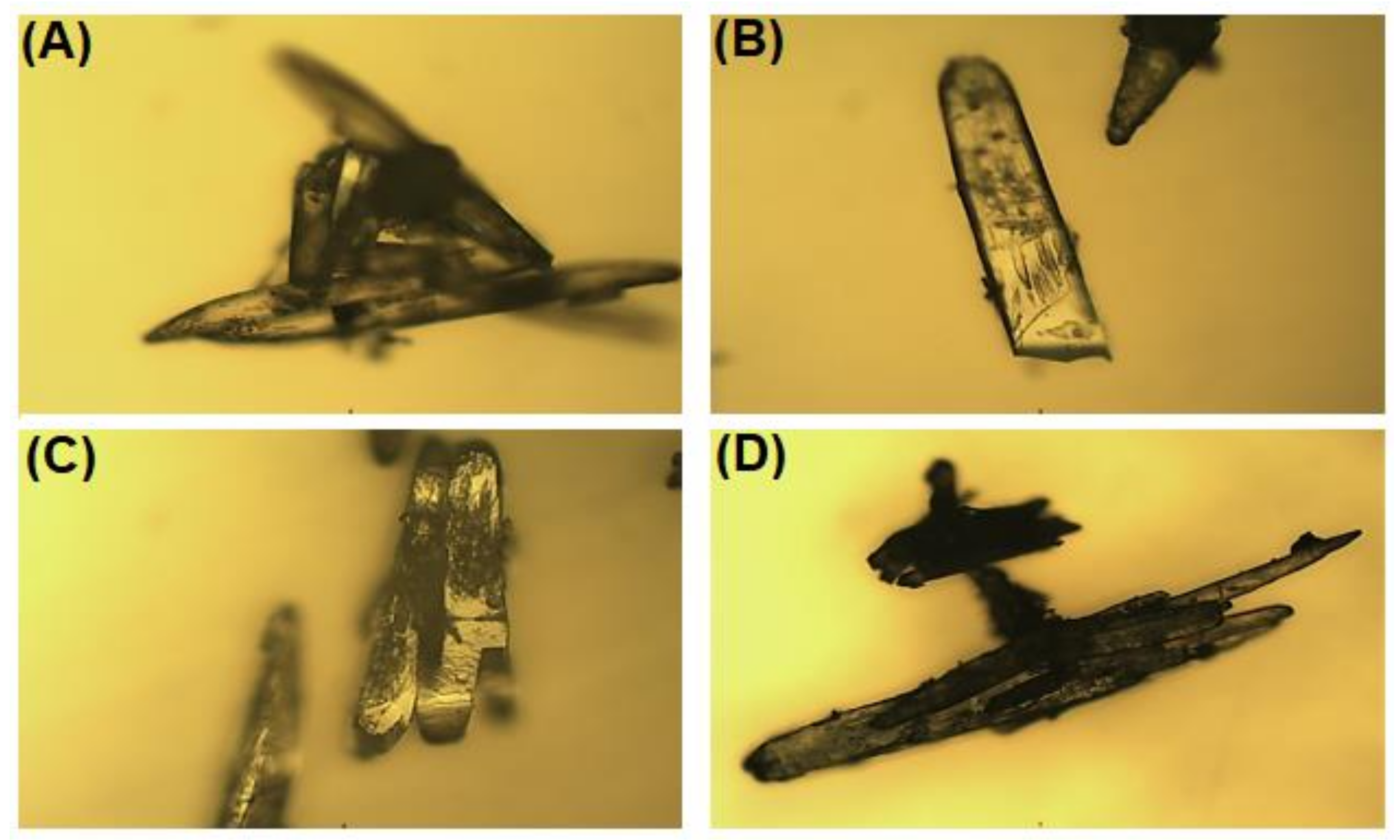
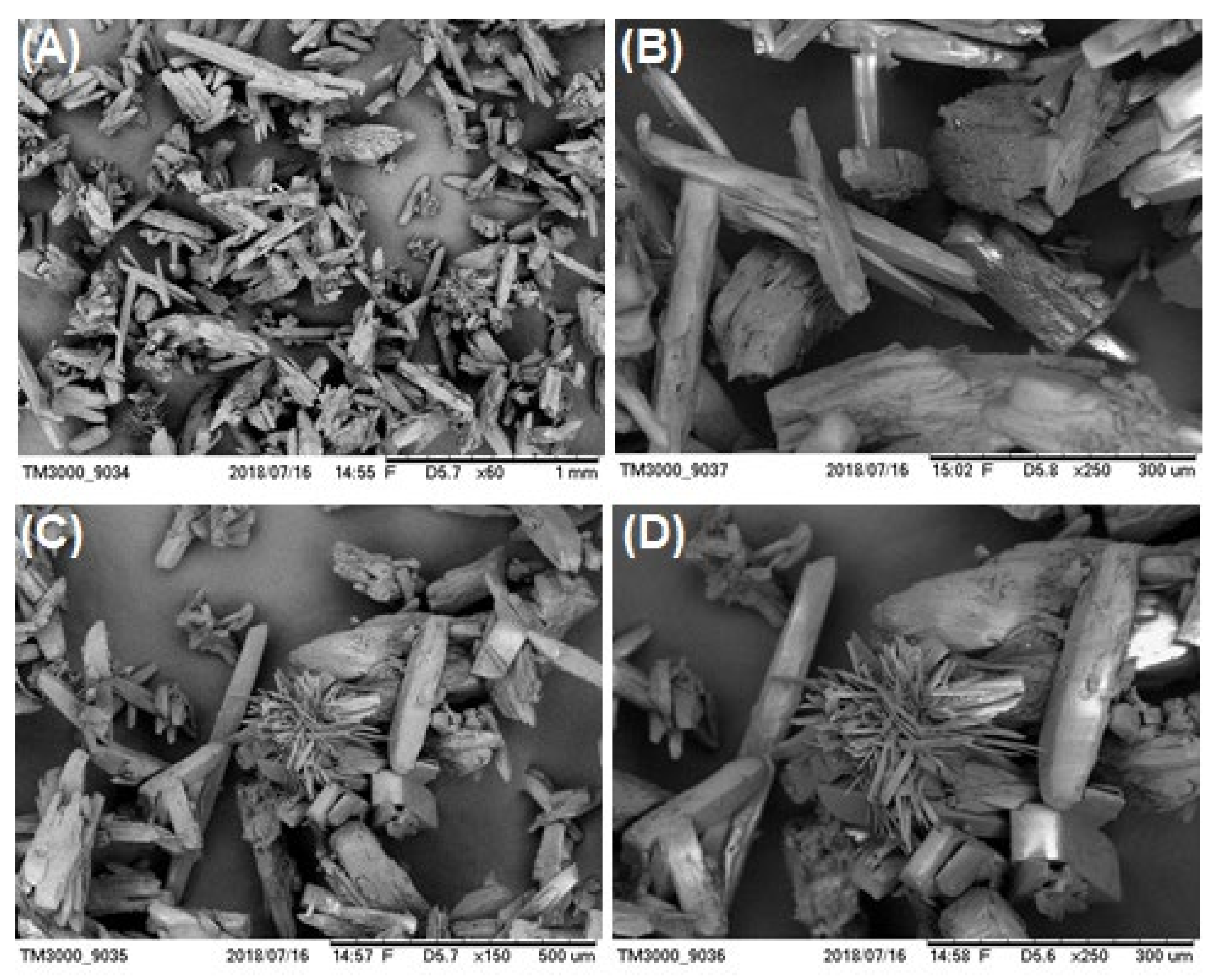
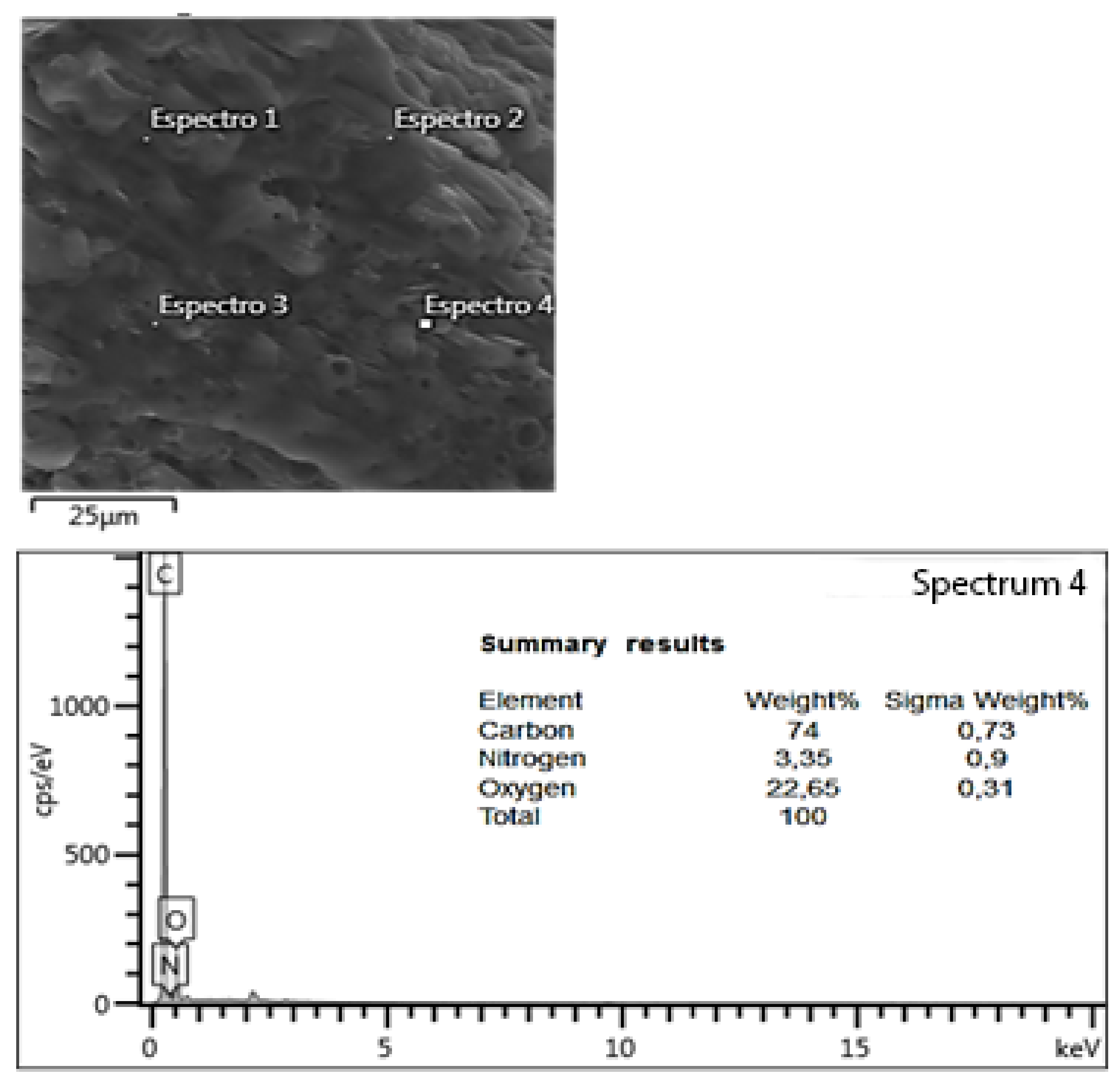
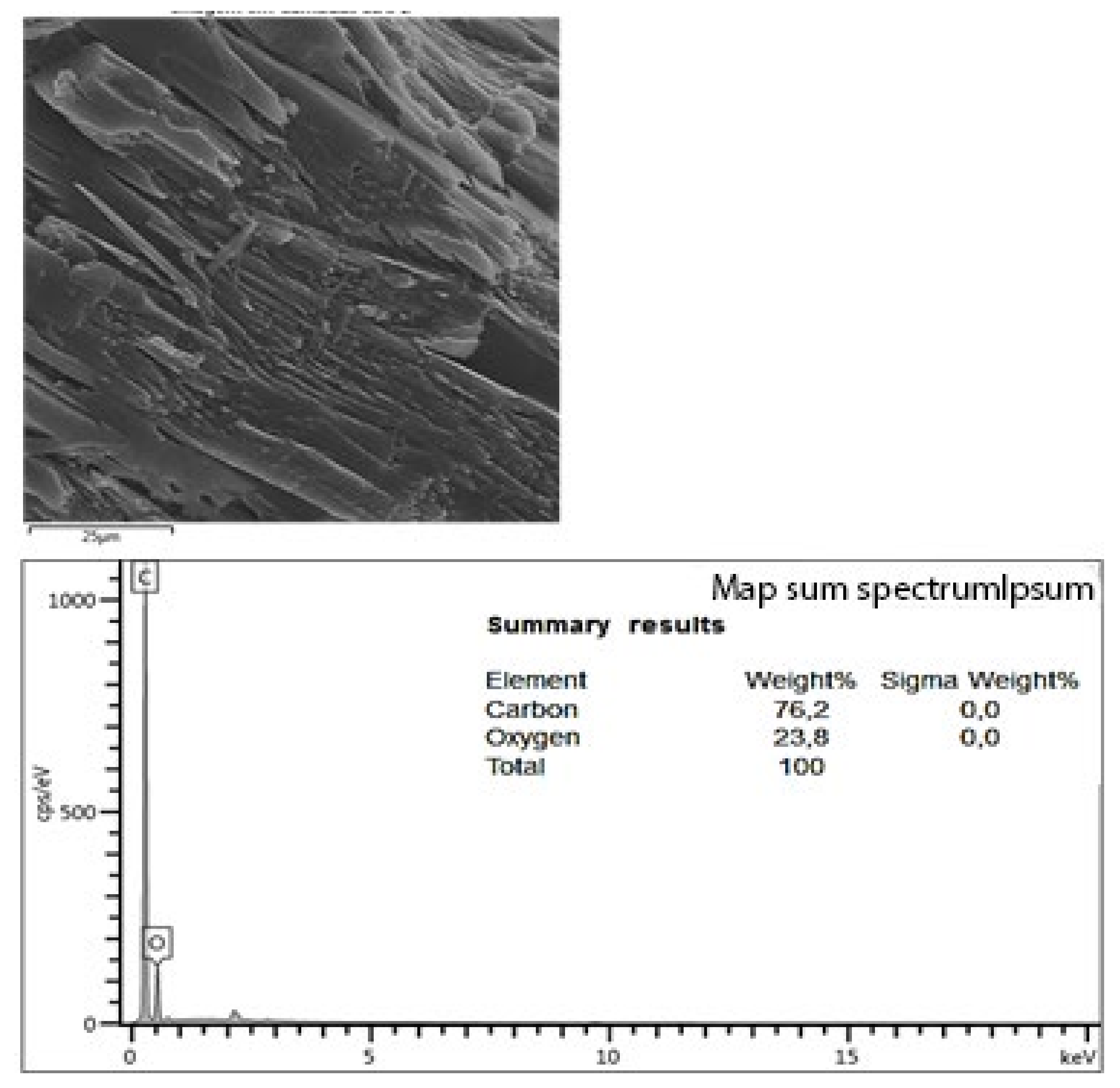
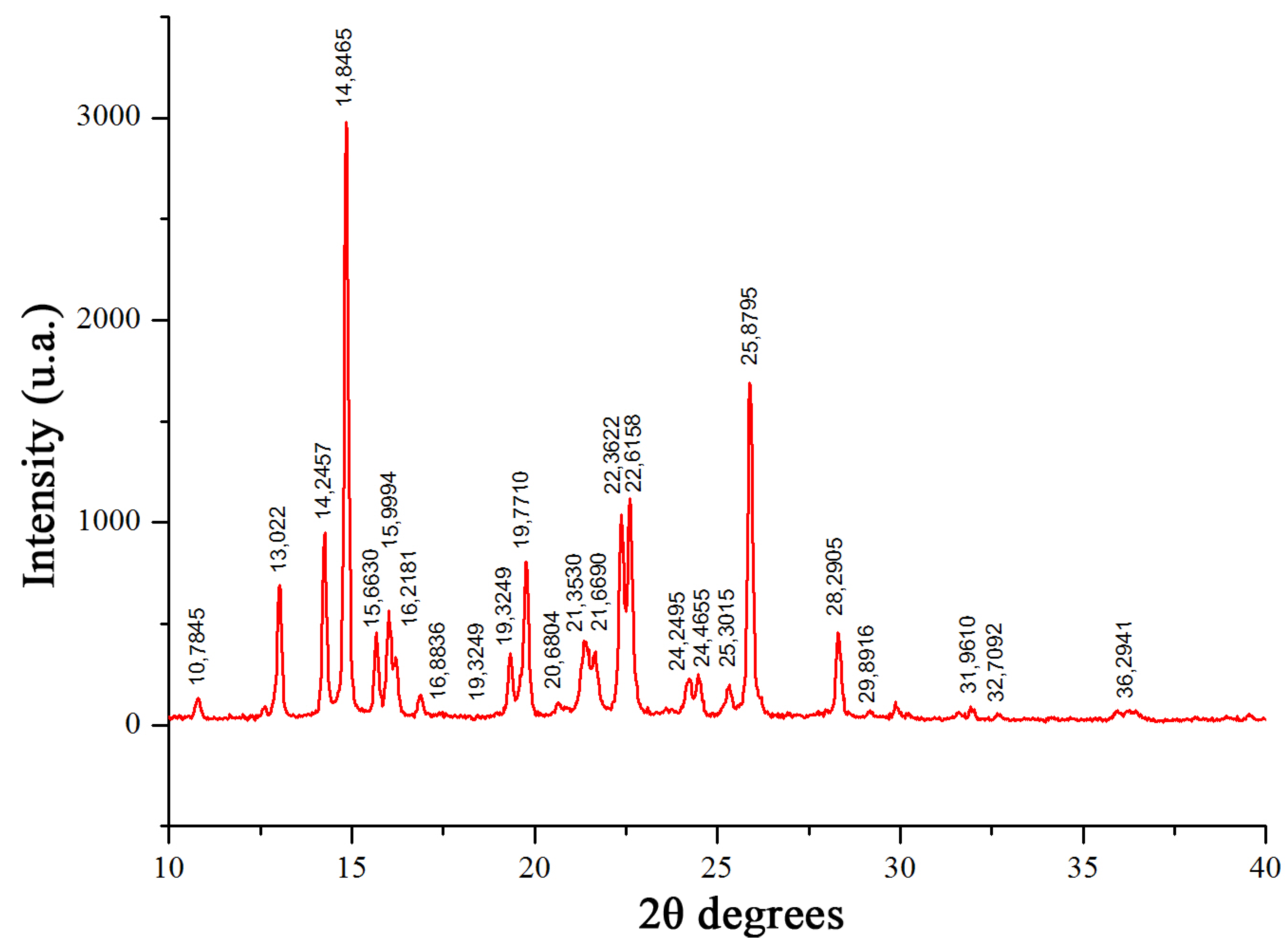
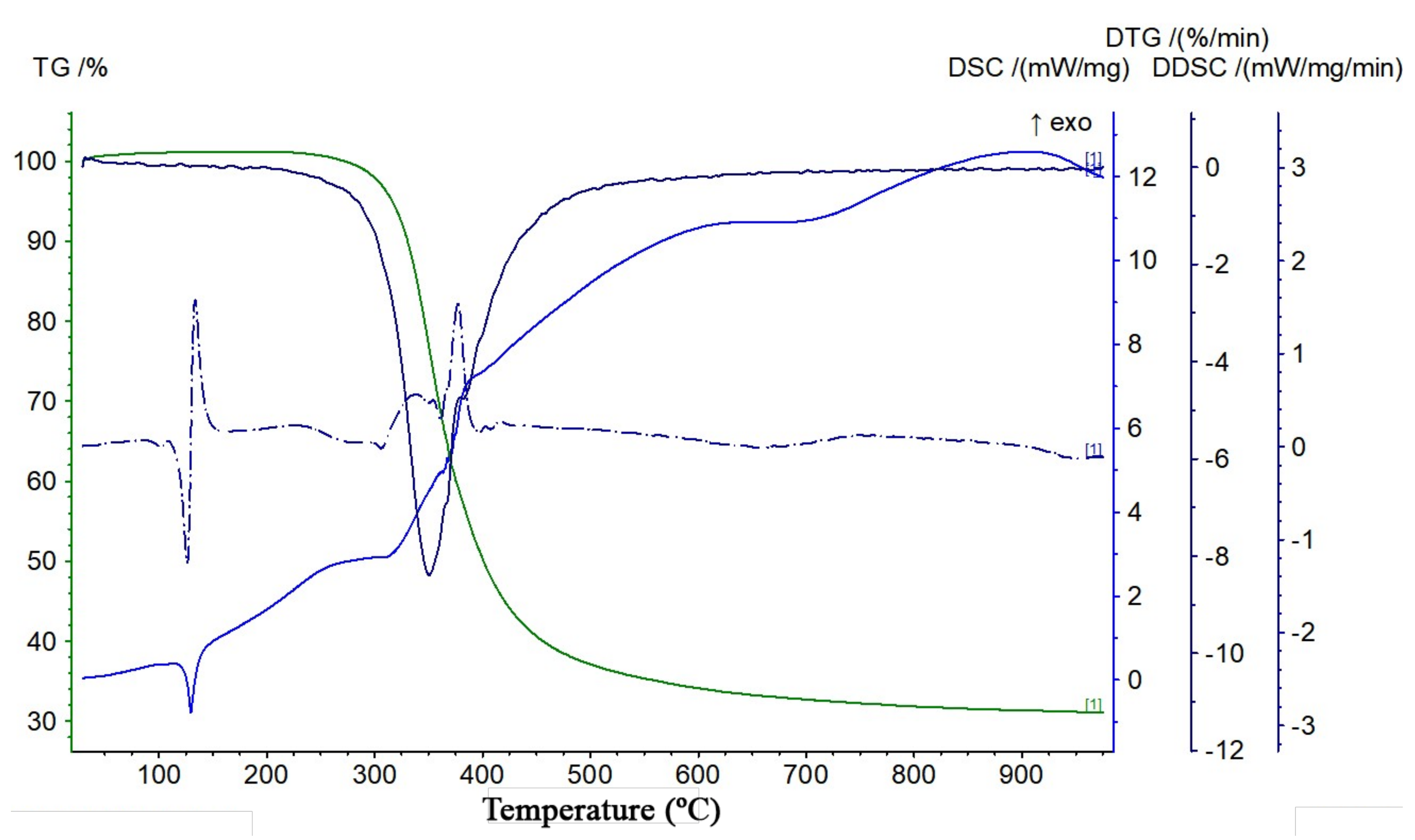
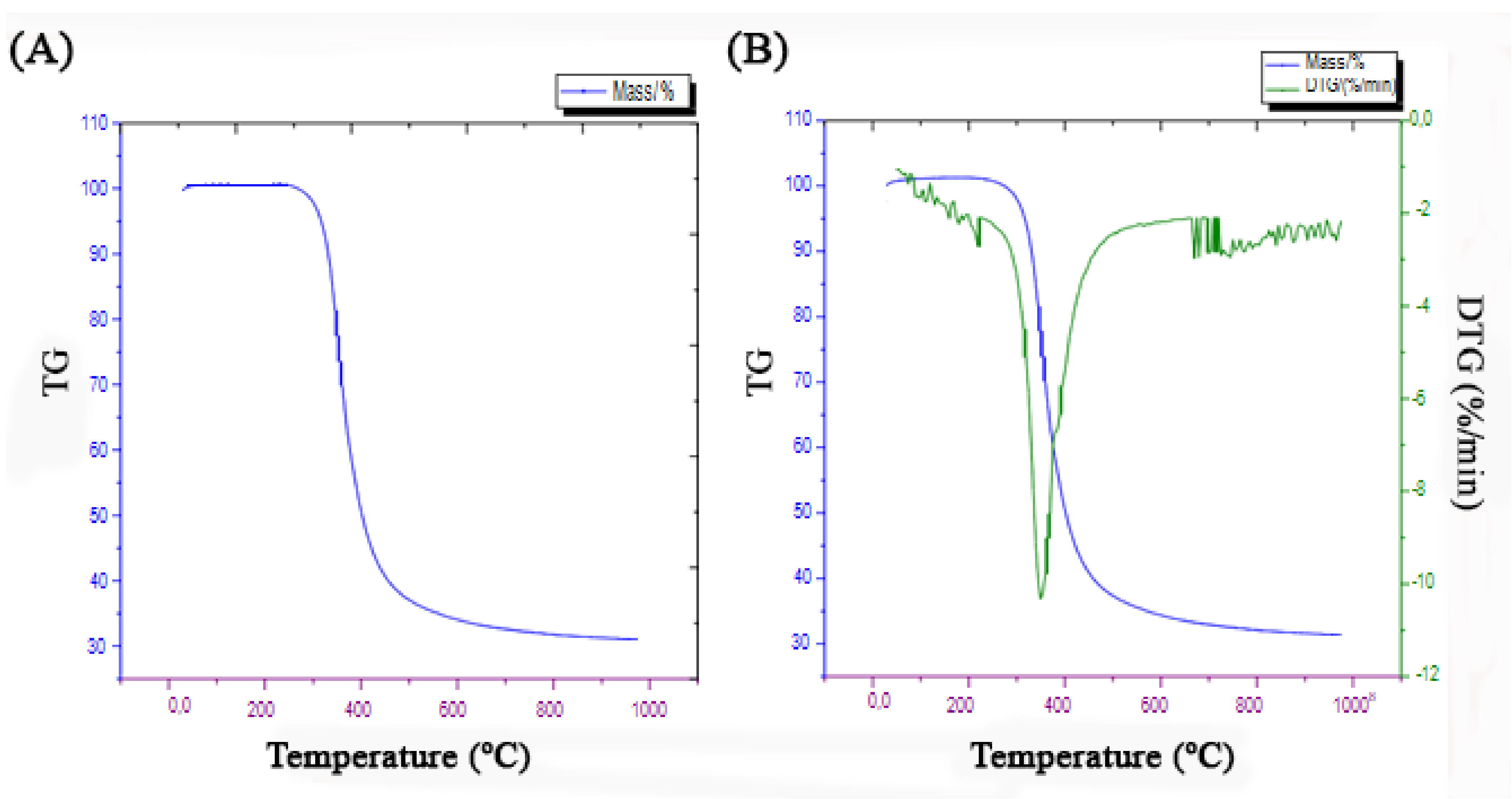
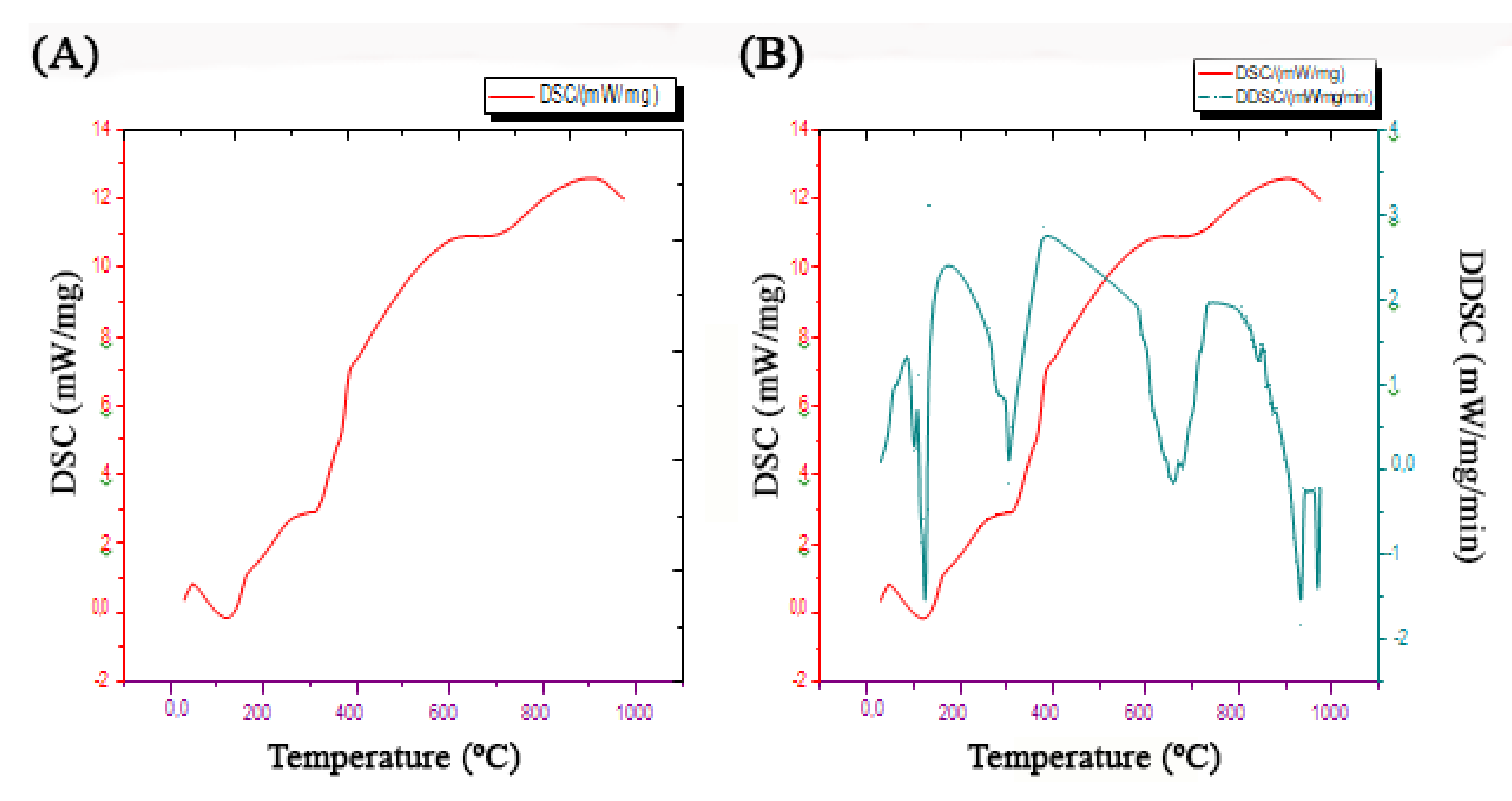
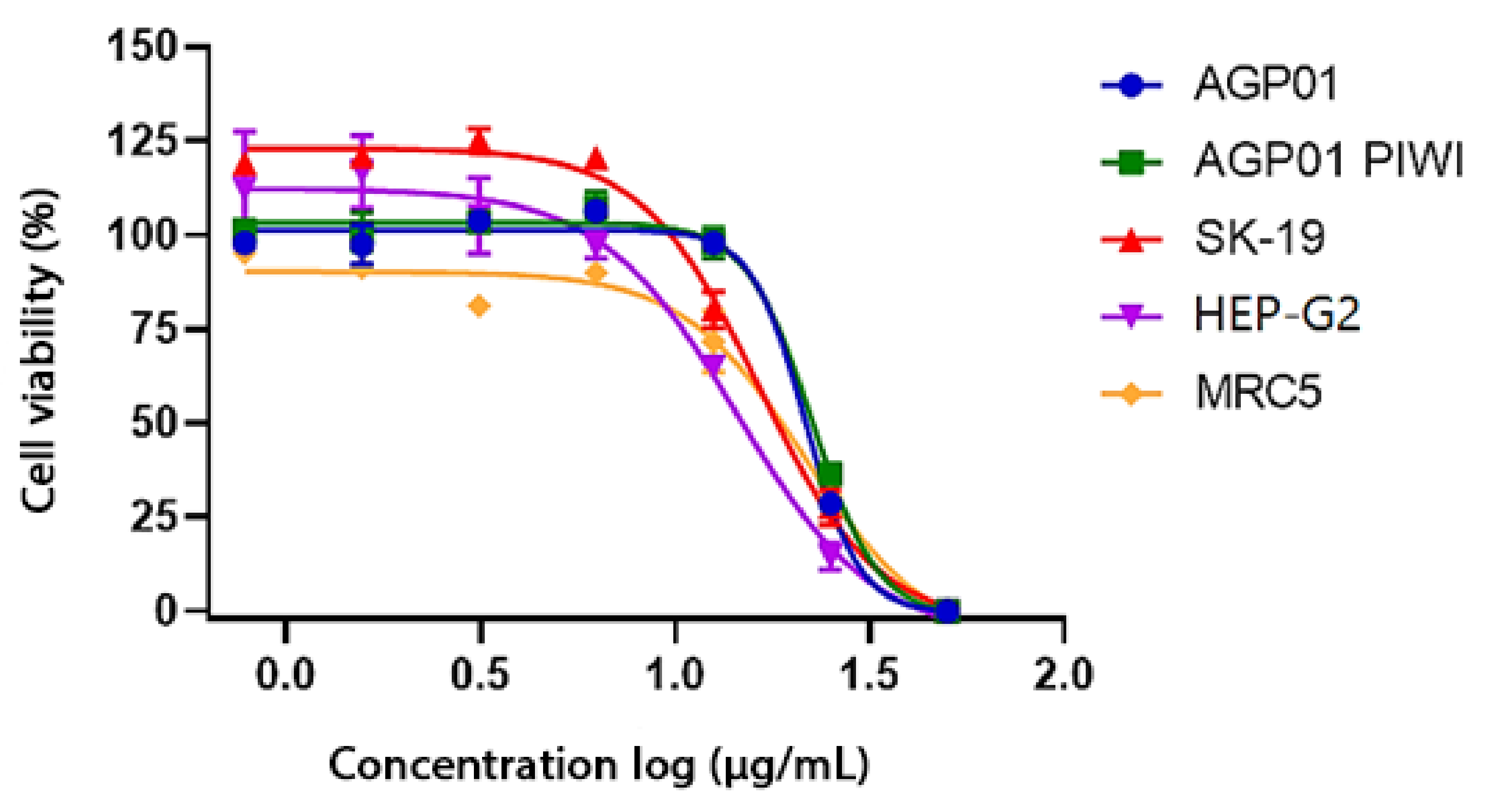
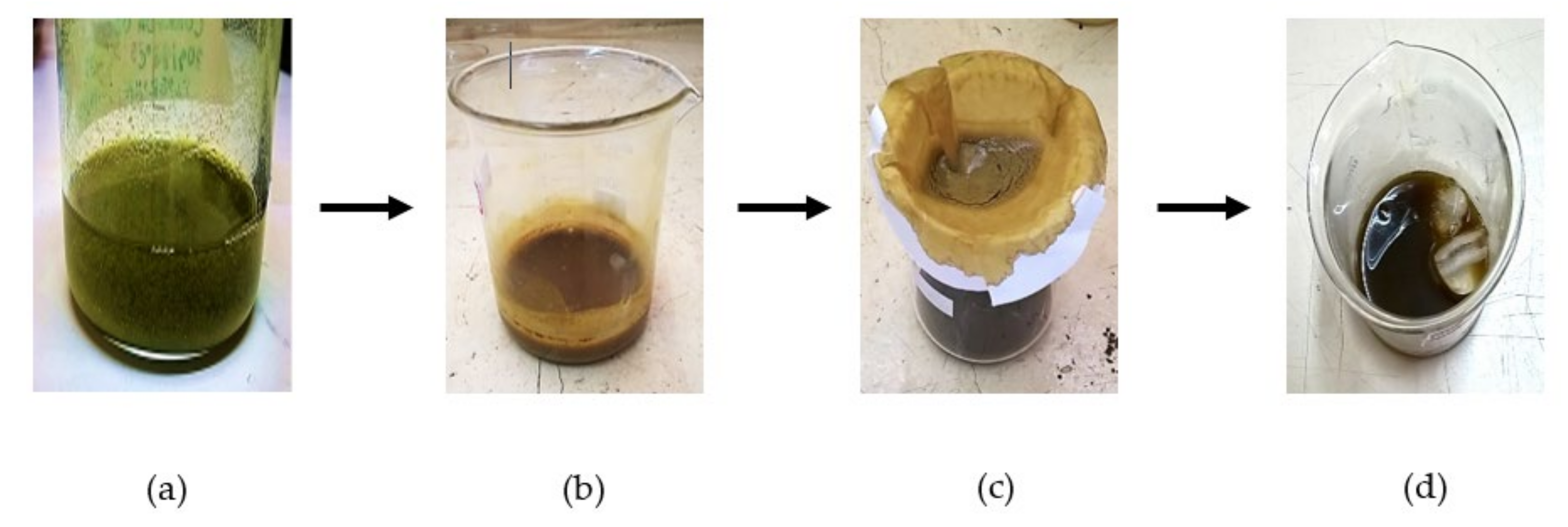
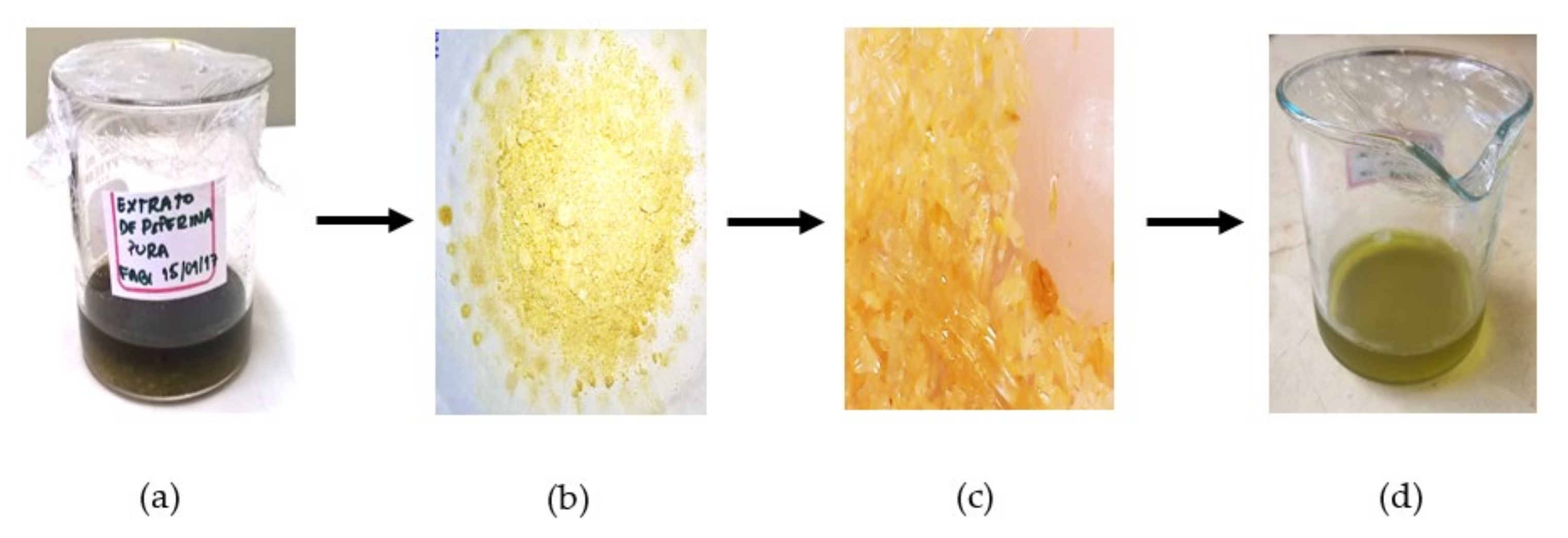
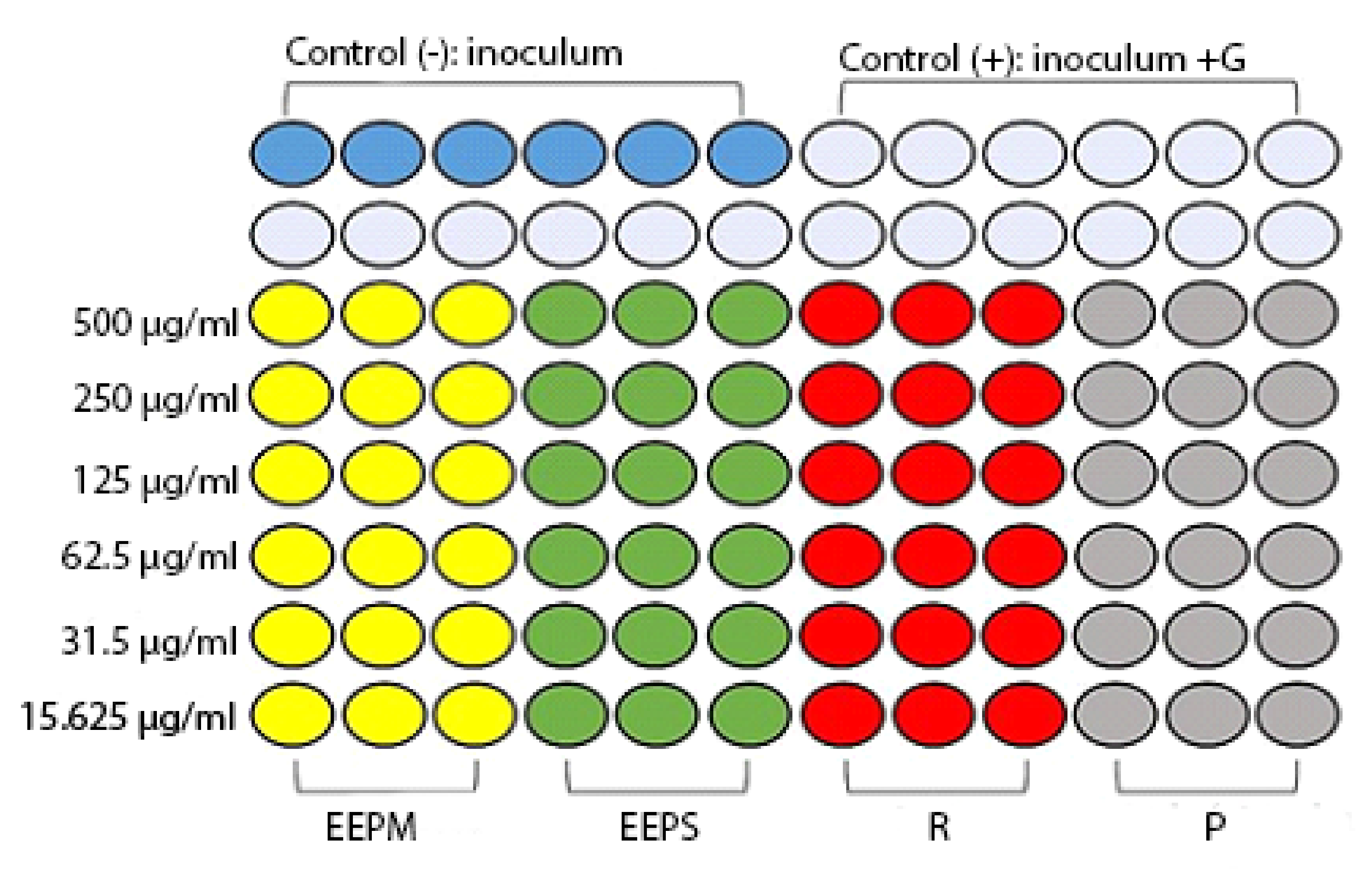
| Samples | Values of IC50 (μg/mL) ± DP | ||||
|---|---|---|---|---|---|
| Staphylococcus aureus | Salmonella sp. | Proteus mirabilis | Pseudomonas aeruginosa | Candida albicans | |
| EEPM | 7034435.0 d ± 0.17 | 43.3 a ± 0.17 | 393.0 b ± 0.16 | 545.0 c ± 0.07 | 287.0 b ± 0.11 |
| EEPS | 0.99 a ± 0.06 | 195.0 b ± 0.28 | 27.0 a ± 0.27 | - | 62.10 a ± 0.13 |
| R | 32.2 a ± 0.15 | 11.0 a ± 0.26 | 325.0 b ± 0.24 | - | 899.0 c ± 0.20 |
| piperine | 59.0 a ± 0.11 | 45.0 a ± 0.23 | 359.0 b ± 0.22 | - | 136.0 b ± 0.12 |
| Cell Lines IC50 (μg/mL) * | |||||
|---|---|---|---|---|---|
| Sample | AGP01 | AGP01 PIWIL1𢀒/𢀒 | SK-MEL-19 | HEP-G2 | MRC5 |
| Piperine | 21.57 (20.14–23.10) R2 = 0.9918 | 22.39 (21.33–23.51) R2 = 0.9929 | 16.39 (15.06–17.85) R2 = 0.9930 | 14.34 (11.66–17.65) R2 = 0.9701 | 23.52 (19.07–24.91) R2 = 0.9829 |
| Sample | Cell Lines IC50 (μg/mL) * | |||
|---|---|---|---|---|
| AGP01 | AGP01 PIWIL1𢀒/𢀒 | SK-MEL-19 | MRC5 | |
| EEPM | 13.82 (12.97–14.73) R2 = 0.9891 | 21.26 (18.66–24.21) R2 = 0.9595 | 14.94 (12.7–17.57) R2 = 0.9731 | 14.17 (11.29–17.79) R2 = 0.9600 |
| EEPS | 19.57 (18.47–20.73) R2 = 0.9936 | 24.53 (22.43–25.79) R2 = 0.9647 | 25.00 (19.00–32.90) R2 = 0.9507 | 13.19 (12.02–14.48) R2 = 0.9718 |
| RP | 43.77 (41.81–45.83) R2 = 0.9927 | 35.59 (27.8–45.56) R2 = 0.9553 | 47.35 (42.45–52.81) R2 = 0.9659 | 27.5 (24.68–30.63) R2 = 0.9706 |
Disclaimer/Publisher’s Note: The statements, opinions and data contained in all publications are solely those of the individual author(s) and contributor(s) and not of MDPI and/or the editor(s). MDPI and/or the editor(s) disclaim responsibility for any injury to people or property resulting from any ideas, methods, instructions or products referred to in the content. |
© 2022 by the authors. Licensee MDPI, Basel, Switzerland. This article is an open access article distributed under the terms and conditions of the Creative Commons Attribution (CC BY) license (https://creativecommons.org/licenses/by/4.0/).
Share and Cite
Alves, F.S.; Cruz, J.N.; de Farias Ramos, I.N.; do Nascimento Brandão, D.L.; Queiroz, R.N.; da Silva, G.V.; da Silva, G.V.; Dolabela, M.F.; da Costa, M.L.; Khayat, A.S.; et al. Evaluation of Antimicrobial Activity and Cytotoxicity Effects of Extracts of Piper nigrum L. and Piperine. Separations 2023, 10, 21. https://doi.org/10.3390/separations10010021
Alves FS, Cruz JN, de Farias Ramos IN, do Nascimento Brandão DL, Queiroz RN, da Silva GV, da Silva GV, Dolabela MF, da Costa ML, Khayat AS, et al. Evaluation of Antimicrobial Activity and Cytotoxicity Effects of Extracts of Piper nigrum L. and Piperine. Separations. 2023; 10(1):21. https://doi.org/10.3390/separations10010021
Chicago/Turabian StyleAlves, Fabrine Silva, Jorddy Neves Cruz, Ingryd Nayara de Farias Ramos, Dayse Lucia do Nascimento Brandão, Rafael Nascimento Queiroz, Glauce Vasconcelos da Silva, Gleice Vasconcelos da Silva, Maria Fani Dolabela, Marcondes Lima da Costa, André Salim Khayat, and et al. 2023. "Evaluation of Antimicrobial Activity and Cytotoxicity Effects of Extracts of Piper nigrum L. and Piperine" Separations 10, no. 1: 21. https://doi.org/10.3390/separations10010021
APA StyleAlves, F. S., Cruz, J. N., de Farias Ramos, I. N., do Nascimento Brandão, D. L., Queiroz, R. N., da Silva, G. V., da Silva, G. V., Dolabela, M. F., da Costa, M. L., Khayat, A. S., de Arimatéia Rodrigues do Rego, J., & do Socorro Barros Brasil, D. (2023). Evaluation of Antimicrobial Activity and Cytotoxicity Effects of Extracts of Piper nigrum L. and Piperine. Separations, 10(1), 21. https://doi.org/10.3390/separations10010021












